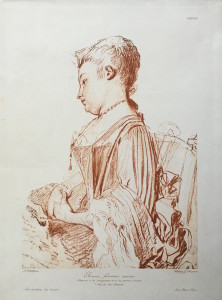 The letters that Rae Solowey wrote to family, friends, and patrons over the years provide the clearest picture of what life was like for the Soloweys on the farm. With no outside entertainment save for the radio (when it worked), the mail provided Ben and Rae a connection to the rest of the world, especially in their earliest days.
The letters that Rae Solowey wrote to family, friends, and patrons over the years provide the clearest picture of what life was like for the Soloweys on the farm. With no outside entertainment save for the radio (when it worked), the mail provided Ben and Rae a connection to the rest of the world, especially in their earliest days.
Fortunately people who received letters from Rae (and they were almost always by Rae) often kept them, and some have returned them to be part of our archive. They offer a fascinating window into the everyday world of the Soloweys, and all are written in Rae’s distinct voice, so they are almost like a recording in ink rather than tape of Rae musing about their life.
Recently, we received a treasure trove of letters that Rae wrote in the months after the Soloweys moved to the farm in the fall of 1942. While they had purchased the farm in April, 1936, and spent a great deal of time here, the war, with its rations on gas and rubber forced them to make a choice of whether to live in New York or Bucks County. To everyone’s surprise, including Rae’s, Ben decided to cast their lot in Bucks County, despite the fact that they had no running or heat.
The letters, provided by Gloria Paseline and her family, were written by Rae to Gloria’s Aunt Lil, who was a friend of Ben ad Rae’s in New York. They all had a great deal of affection for each other and in the early days of the Soloweys in Bucks County, they wrote each other every week. Lil sent care packages to her friends living in the “wilderness,†and one for Ben elicited the very rare Ben Solowey letter.
The letters describe the weather on the farm in their first days, which was pretty rough. The winter of 1942-43 saw an extraordinary amount of snowfall, and the Solowey frequently found themselves snowbound. To get gas rations, they had to be classified as farmers, and they set up a 300-chick operation that produced eggs, but was mainly meant to sell the chickens and roosters as they matured. The letters detail the work, their success, and the near tragedy when a chick almost pecked out Rae’s eye.
Although Rae would eventually type all of her letters, in this period they are all written in her delicate penmanship, in which she capitalized the first letter of every line. Few are dated in a conventional manner as to determine the exact date, with most labeled “Wednesday A.M.†or “Thursday Noon.â€
Here are a few snippets from the letters. Probably more will come in the future:
“…typical winter scene is truly one of breath-taking magnificence. Only in Central Park can one get the same effect.â€
Lil sent clippings from time to time including one about an exhibition that Ben’s work was hung at the metropolitan Museum of Art alongside paintings by Edward Hopper, Reginald Marsh, Jackson Pollock, Marsden Hartley, and Bucks County stalwarts such as John Folinsbee, Daniel Garber, and Walter Baum:
‘It was interesting to read about the Artists for Victory show. We learned that Ben’s watercolor, ‘Heathers’ was included and he’s pleased with the selection as it is one of his best. The Chicago Art Institute returned this after a year on their rotary exhibition.â€
In regards to a clipping about city and country people:
“You see Lil there are many ‘city folks’ who look down on the sort of thing Ben is doing at the moment. After all, they say, it’s only manual labor requiring nothing more than that, while they, now are thinkers and that’s something. That it is more difficult and wearing to have to contend with an office, etc….I prefer to ignore the whole thing because I see what Ben does. If an engineer or builder gave him a set of blue prints and he made these things—that’s manual labor. But to have to figure it all out and right and then execute it well, there’s no sense in even talking to people in that light.
The Soloweys were friends with impresario Sol Hurok and were invited to several early Isaac Stern recitals. They could not make his first Carnegie Hall recital in 1943, but Lil took Rae’s sister Rick:
“We’re really sorry we won’t be in on the Isaac Stern concert as we did enjoy his last two recitals. Not that we feel we have any right to express musical criticism (I always visualize people who ‘go in for’ artistic analyses—and I shudder!) But we felt Isaac definitely had a touch of genius, more than just talent anyway. Here’s hoping he makes the grade.â€
The Carnegie Hall recital was Stern’s breakout performance.
 Thurs. June 2nd at 7:30 pm at the Studio of Ben Solowey
Thurs. June 2nd at 7:30 pm at the Studio of Ben Solowey


























